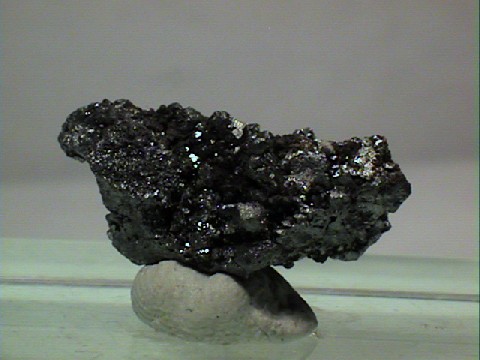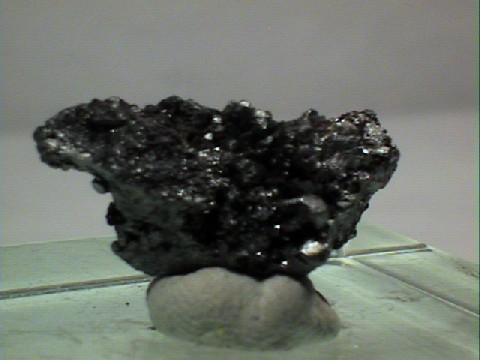 THE
MINERAL GRATONITE
THE
MINERAL GRATONITE
- Chemistry: Pb9As4S15, Lead Arsenic Sulfide
- Class: Sulfides
- Subclass: Sulfosalts
- Uses: Mineral specimens and as a very minor ore of lead.
Specimens
Gratonite is a rare lead sulfide mineral. It forms nice crystals that can be arranged into rosette-like clusters with projecting rhombohedral terminations. Clusters can be attractive and good specimens command large prices, mostly because of the rarity of the mineral. Gratonite is a sulfosalt, a segment of sulfides where the arsenic acts more like a metal than a non-metal and occupies a position where it is bonded to sulfurs.
Also, Gratonite is the most common mineral whose symmetry is in the Trigonal Pyramidal Class
PHYSICAL CHARACTERISTICS:
- Color is a dark lead gray.
- Luster is metallic.
- Transparency: Crystals are opaque.
- Crystal System: Trigonal; 3
- Crystal Habits include rhombohedral as well as hexagonal prismatic crystals capped by three rhombohedral faces. Clusters can be found in rosette-like aggregates, also massive.
- Cleavage: None.
- Fracture: Subconchoidal.
- Hardness is 2.5
- Specific Gravity is 6.2 (heavier than average for metallic minerals)
- Streak is gray.
- Notable Occurrences are limited to the Excelsior Mine, Cerro de Pasco, Peru.
- Best Field Indicators are crystal habit, locality, color and density.



